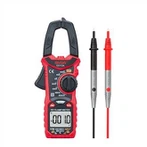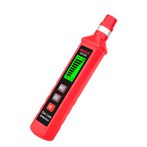The use of a handheld laser rangefinder in archaeological research
During the process of drawing the plan and section of the tomb, the length, width, and height of the tomb should be measured and registered, and then drawn according to the scale. Assuming the tomb is a vertical pit tomb with the same size at the bottom of the mouth. If you want to measure the width of the tomb chamber, set the handheld laser rangefinder (Hilti PD42) to start from the bottom of the instrument, then place the bottom of the handheld laser rangefinder against the tomb wall, hold the horizontal button, and the tomb width data will be displayed on the screen. Length measurement is similar to width measurement, and depth measurement can be directly measured from the tomb entrance downwards. A target board can also be placed at the tomb entrance for measurement from the bottom upwards, and the effect is consistent. If the bottom of the tomb opening is different in size, in order to prevent the influence of tilted tomb walls, an extension rod can be used for delayed measurement.
2. Measurement of soil mounds. Set the handheld laser rangefinder to triangulation mode, and then use the handheld laser rangefinder as the vertex (preferably horizontal to the bottom of the embankment) to measure the distances to the bottom and top of the embankment. The height of the embankment will be automatically calculated and displayed in the instrument. This function is particularly practical in the wild. In the Great Wall resource survey, if some beacon towers cannot be climbed up or are difficult to approach, this function can be used to measure the height of the beacon towers; In the third cultural relic census, some ancient buildings, stone carvings, etc. are also difficult to access, and this function can also be used for measurement.
Area and volume measurements are also widely used in archaeology. For example, the exploration area, tomb opening area, city site area, exploration earthwork, tomb earthwork, etc. To achieve these functions, simply switch the function options of the handheld laser rangefinder to the corresponding options, and then measure two to three data points of the entity to obtain area and volume data. As for the layout function of the handheld laser rangefinder, it will not be elaborated here because the layout functions of the total station and GPS-RTK are much more powerful than it.






